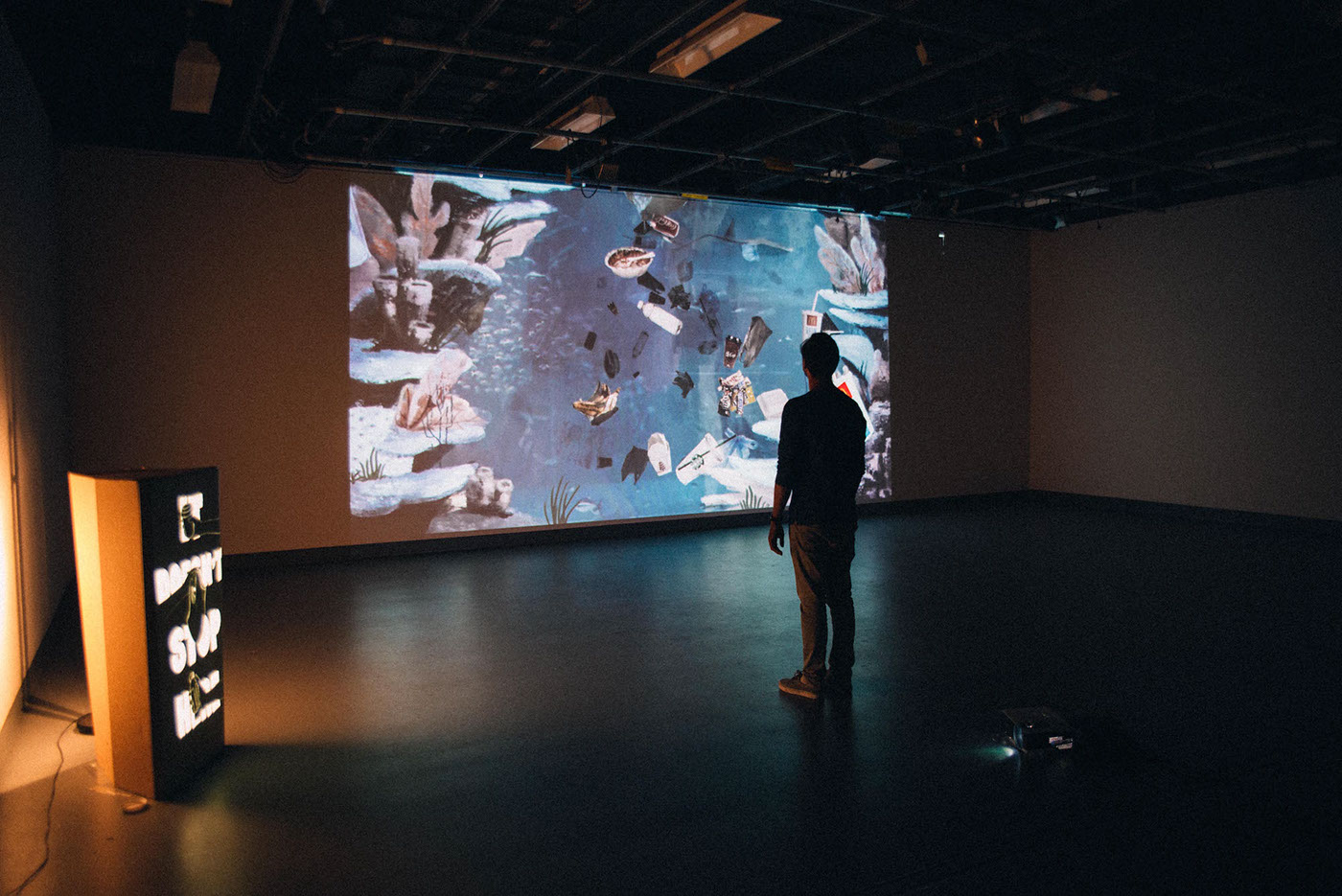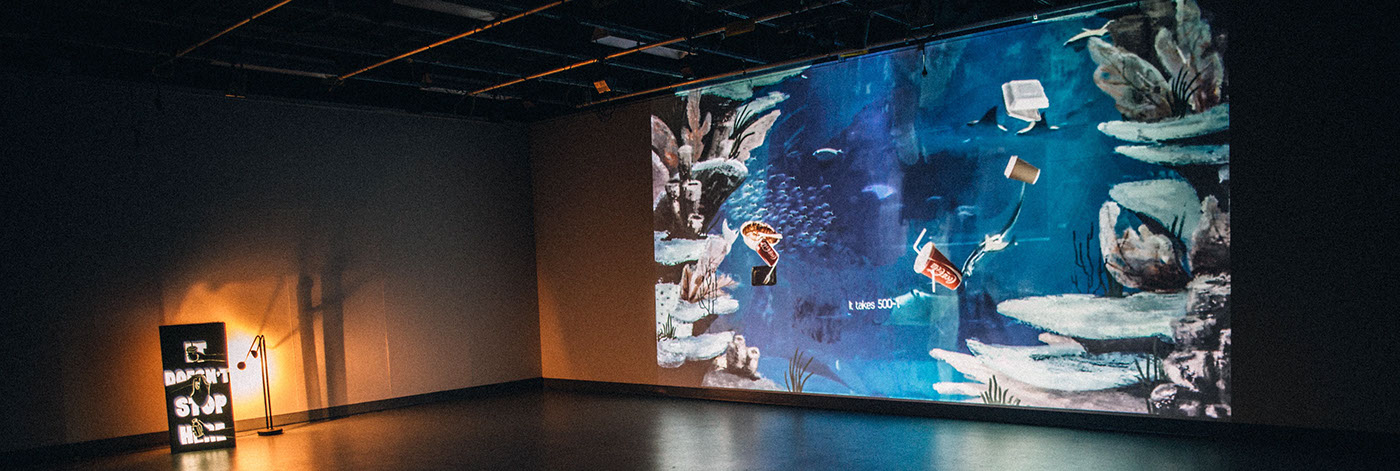

There is a common assumption that individuals make the active decision to live unsustainable or unhealthy lifestyles (Gardiner, 2014; AHRC, 2014), but in reality, individuals make decisions intuitively and with little conscious effort (Milkman, Ghugh & Bazerman, 2008). This means that individuals’ everyday behaviour does not always align with their intentions, however environmentally responsible they may wish to be. Through analysis of existing design for behaviour change literature, it was found that behaviour change theories that break the automatic behaviour loop to promote conscious reflection and voluntary commitment of new behaviour have the potential to create lasting change.

Mindful Design: Creating behaviour change through the modification of a practical or
symbolic function of a design to allow users to rethink their actions.
Eco-feedback: A visual, aural, or tactile way to inform users clearly about what they
are doing and to facilitate environmentally and socially responsible decisions
through offering real-time feedback

Pollution and plastic waste is a shared concern by society at large, yet considering the staggering statistics, individuals’ actions are not reflecting these concerns. Because there are many different types of uses for plastic products, disrupting this behaviour requires a point in the automatic behaviour loop, where all disposable plastic ends up: the rubbish bin. Along with collecting waste, a bins symbolic function is to keep waste hidden from the public until it can be removed and placed somewhere equally out of sight and out of mind. This gives the illusion that there is no problem, and gives no visual feedback on the amount and type of waste the population is discarding every day.

By mounting a camera inside a public bin, real time photos are taken of a participants’ waste and added to a projected scene of an aquarium. As urbanised areas are becoming increasingly removed from nature, the scene of an aquarium instils an inherent sense of curiosity; this window into another world transfixes participants. The scale of the scene, the immersive nature of the experience and the progressive change in the scene over-time enables the eco-feedback influence to have full effect. As additional participants add their waste to the bin, the aquarium scene continues to fill up and the coral begins to die, creating a visual connection between waste that is discarded and pollution. In addition to this interaction, facts and statistics about pollution and plastic waste appear, layered on top of the new piece of rubbish floating in the scene. This textual layering provides depth to the information being shared with the users – and draws immediate connection between action (waste) and outcome (pollution).

By changing the symbolic function of the bin – hide and conceal waste – to showing the waste discarded, allows users to physically see their own, and their community’s impact on the environment. This unexpected visual eco-feedback disrupts the user’s automatic behaviour, allowing reflection and consideration about their personal habit.

In addition to the projected aquarium wall, the bin itself was also used as a canvas to convey, communicate and educate users. When users approached the bin, a visual cue of pulsing circles invited them to touch illustrations of products that resemble what they have just thrown away (for example, a disposable coffee cup). Once triggered by light sensors, these illustrations then transform into animated infographics that explain specific details about the chosen product and its subsequent environmental impact. This element was added to the experience to create an opportunity to share ideas with the user on how they can change their consumption habits. At the end of each animation was a list of alternative practises that could be easily implemented by the user. This is important, because without clear future directions, the experience may leave users overwhelmed and unsure on how else they might act.



Watch the link below for the video documentation of the experience
To purposefully direct users towards more sustainable practices, ‘It Doesn’t Stop Here’, links users to direct, actionable answers as well as valuable information. The combined use of mindful design and eco-feedback through the interactive projection mapping experience, has been effective in reducing the intention-behaviour gap, with a high number of research participants claiming to have changed their behaviour around disposable plastic. By providing the participants with a deeper understanding of their own impact through this experience, they have reflected on their personal habits and have motivated themselves to be more environmentally responsible. Not only have over two thirds of the research participants changed their behaviour, but through sharing information about the experience and the knowledge they gained, some participants have convinced others to take steps to become more sustainable. The fact that some participants have reduced their consumption of products that were not the key focus of the experience, suggests that this type of influence has the potential to trigger users to continue to consciously reflect on their behaviours after the experience.












